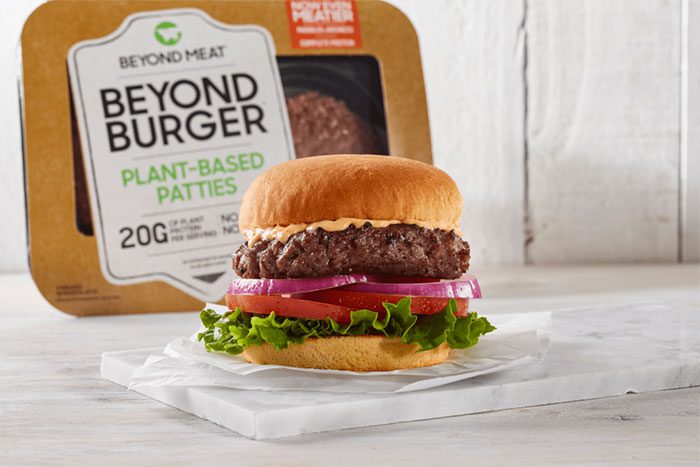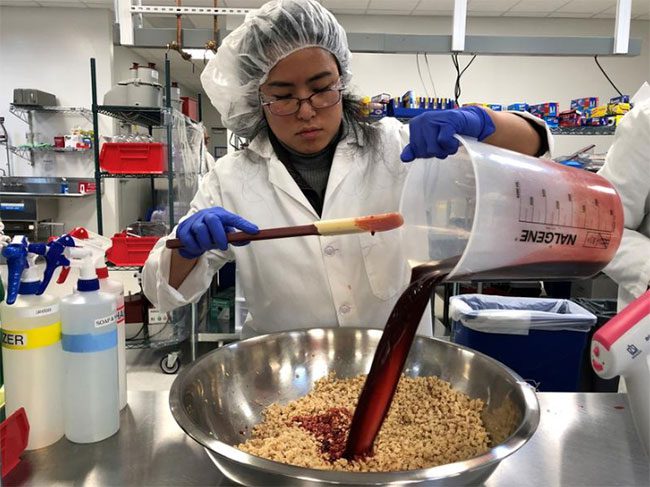More and more people are becoming aware that the cost of a plate of meat on the table comes with a significant amount of greenhouse gas emissions, which affects not only the air and water but also future generations. Plant-based meat is expected to be a viable alternative.
Unlike the bean or grain-based burgers of previous decades, this type of “plant-based meat” – most notably represented by brands like Impossible Burger and Beyond Meat – is being marketed extensively to traditional meat eaters. Producers are committed to recreating the taste and texture of plant-based meat to resemble real ground meat.

Plant-based burger by Beyond Meat – (Photo: AFP).
Biochemist Pat Brown from Stanford University established Impossible Foods after questioning what he could do to make the most significant difference for the environment. His answer was to replace meat.
To achieve this, Impossible Foods disassembled meat into its constituent parts and then created a similar product from plant-based ingredients.
Producers start with plant proteins, primarily soy, potatoes, oats, or equivalent proteins from other sources.
They then add carefully selected ingredients to mimic the flavor of real meat, mostly coconut oil to replace animal fat, along with yeast extract or other flavorings.

Research technician Alexia Yue from Impossible Foods pours heme solution into a plant-based mixture to create meat for burgers – (Photo: REUTERS).
William Aimutis, a food protein chemist at North Carolina State University, states that all of this requires a fairly rigorous processing method.
For example, soybeans are typically ground into flour, and then the oil is removed. The proteins are isolated and concentrated, then pasteurized and spray-dried to produce relatively pure protein.
However, each step consumes energy, raising the question: Are these alternative meats truly more environmentally friendly?
Additionally, “plant-based meat” currently has an average price that is 43% higher than real meat, which is a reason why “plant-based meats” account for less than 1% of meat sales in the U.S. Advocates are optimistic that prices will drop as the market develops, but that has yet to happen in the near future.
Achieving economies of scale will also require significant effort: even reaching just 6% market penetration would necessitate an investment of $27 billion (approximately 600 trillion VND) in plant-based meat production facilities.
Livestock contributes about 15% of global greenhouse gas emissions, both directly (methane emissions from cattle, poultry, and other grazing animals) and indirectly (fossil fuels used to grow feed crops for livestock).
If the global livestock population were a country, its greenhouse gas emissions would rank second in the world, only behind China.
Among these, grazing animals like cattle, sheep, and goats emit significantly more greenhouse gases than non-grazing animals like pigs and chickens, primarily due to methane production from their digestion.


















































